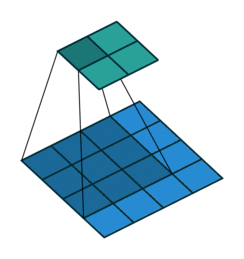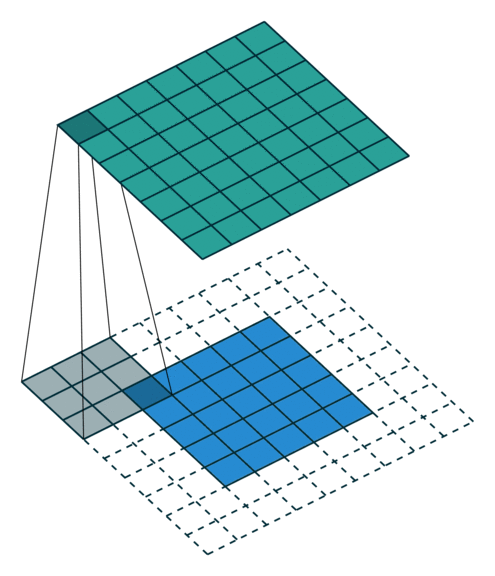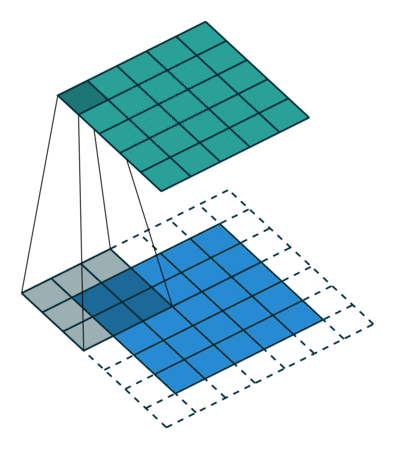文档是这么写的:
border_mode: str, int or tuple of two int
Either of the following:
``'valid'``: apply filter wherever it completely overlaps with the
input. Generates output of shape: input shape - filter shape + 1
``'full'``: apply filter wherever it partly overlaps with the input.
Generates output of shape: input shape + filter shape - 1
``'half'``: pad input with a symmetric border of ``filter rows // 2``
rows and ``filter columns // 2`` columns, then perform a valid
convolution. For filters with an odd number of rows and columns, this
leads to the output shape being equal to the input shape.
``int``: pad input with a symmetric border of zeros of the given
width, then perform a valid convolution.
``(int1, int2)``: pad input with a symmetric border of ``int1`` rows
and ``int2`` columns, then perform a valid convolution.
首先, 这几种模式对应的padding都是zero-padding.
int, (int1, int2): 它们最容易理解的: 手动指定行和列方向上的padding数量.valid: 其实就是不padding, 即(border\_mode = (0, 0))

full: 它的padding为:(border\_mode=(k_h-1, k_w-1)), 其中(k)为kernel的行数(高)与列数(宽). 若(k_h=k_w=3), conv操作会全方位覆盖所有的((3, 3)), ((3, 1)), ((2,1)), ((1, 1))区域. 这也是它叫full的原因.

half: (border\_mode = (frac {(k-1)}{2}, frac{k-1}{2})). 注意, (k)一般都是奇数.full模式的padding得到的conv输出比输入要大, 而half的输出形状与输入相同. 也有叫same的.

* 原始图片来源: https://github.com/vdumoulin/conv_arithmetic * Reference: http://deeplearning.net/software/theano_versions/dev/tutorial/conv_arithmetic.html